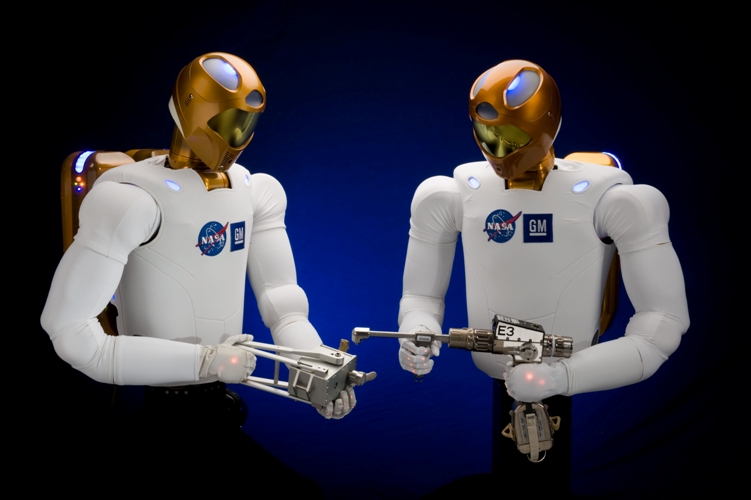
The core idea behind the Robonaut series is to have a humanoid machine work alongside astronauts. COURTESY
A robonaut is a humanoid robot, part of a development project conducted by the Dexterous Robotics Laboratory at NASA's Lyndon B. Johnson Space Center (JSC) in Houston, Texas. Robonaut differs from other current space-faring robots in that, while most current space robotic systems (such as robotic arms, cranes and exploration rovers) are designed to move large objects, Robonaut's tasks require more dexterity.
The core idea behind the Robonaut series is to have a humanoid machine work alongside astronauts. Its form factor and dexterity are designed such that Robonaut can use space tools and work in similar environments suited to astronauts.
The latest Robonaut version, R2, was delivered to the International Space Station (ISS) by STS-133 in February 2011. The first US-built robot on the ISS, R2 is a robotic torso designed to assist with crew EVAs and can hold tools used by the crew. However, Robonaut 2 does not have adequate protection needed to exist outside the space station and enhancements and modifications would be required to allow it to move around the station's interior. NASA states "Robonauts are essential to NASA's future as we go beyond low Earth orbit",and R2 will provide performance data about how a robot may work side-by-side with astronauts.
Robonaut 1 (R1) was the first model. The two Robonaut versions (R1A and R1B) had many partners including DARPA. None were flown to space. Other designs for Robonaut propose uses for teleoperation on planetary surfaces, where Robonaut could explore a planetary surface while receiving instructions from orbiting astronauts above. Robonaut B was introduced in 2002, R1B is a portable version of R1.R1 had several lower bodies. One of these was the Zero-G Leg, which if Robonaut was working on the space station he would climb using the external handrails and then use his zero-g leg to latch onto the station using a WIF socket. Another was the Robotic Mobility Platform (RMP), developed in 2003, it is a base with two wheels using a Segway PT. And the four wheeled Centaur 1, which was developed in 2006. Robonaut has participated in NASA's Desert Research and Technology Studies field trials in the Arizona desert.In 2006, the automotive company General Motors expressed interest in the project and proposed to team up with NASA. In 2007 a Space Act Agreement was signed that allowed GM and NASA to work together on the next generation of Robonaut.
In February 2010, Robonaut 2 (R2) was revealed to the public. R2 is capable of speeds more than four times faster than R1, is more compact, more dexterous, and includes a deeper and wider range of sensing.It can move its arms up to 2 m/s, has a 40 lb payload capacity and its hands have a grasping force of roughly 5 lbs. per finger. There are over 350 sensors and 38 PowerPC processors in the robot.
Station crew members will be able to operate R2, as will controllers on the ground; both will do so using telepresence. One of the improvements over the previous Robonaut generation is that R2 does not need constant supervision. In anticipation of a future destination in which distance and time delays would make continuous management problematic, R2 was designed to be set to tasks and then carry them through autonomously with periodic status checks. While not all human range of motion and sensitivity has been duplicated, the robot's hand has 12 degrees of freedom as well as 2 degrees of freedom in wrist. The R2 model also uses touch sensors at the tips of its fingers.






0 Comments